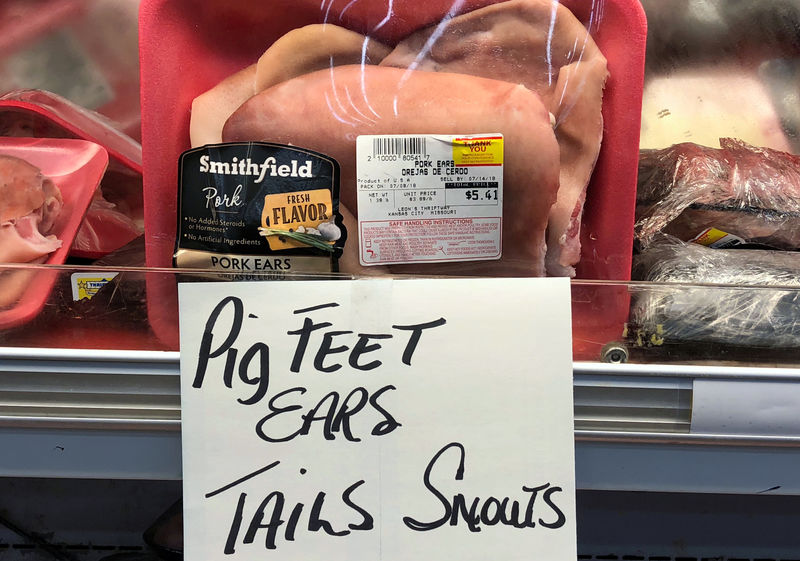(Bloomberg) -- Just as the spread of African swine fever in China ignites global protein markets, it’s getting harder to find out how much hogs should cost in the U.S. Midwest.
Vertical integration in the industry has made long-term supply agreements between producers and packers more prevalent. That means fewer animals are sold in daily negotiations. On some days, negotiated purchases make up only about 1% of total trades in the U.S., Steve Meyer, economist at animal agriculture consulting firm Kerns & Associates in Ames, Iowa, said by telephone.
A sleepy spot market threatens transparency at a time when swine-fever disruptions are driving up volatility in Chicago hog futures. Spot sales help with the pricing of other contracts and serve as the basis for hedging risk, said Jeff Diesen, chief financial officer at The Maschhoffs. The Illinois-based producer sells about 10% of its hogs on spot markets to aid transparency.
Adding to the opaqueness, key cash hog prices published by the U.S. Department of Agriculture have been few and far between this month.
A price for negotiated hog trades in the western half of the Midwest -- one of the largest concentrations of pork production in the world -- has not been disclosed in six out of the past 10 trading days. The average traded price on July 11 was 69.08 cents per pound; by the next reported price on July 17, values had jumped almost 4% to 71.86 cents.
“We are currently working with various stakeholder groups on a resolution on this issue,” the USDA said in an emailed response. The agency intends to make an announcement when a decision is made on any potential changes to its reporting.
If hog prices are rising but not disclosed, farmers could be missing out. Likewise, if the market is declining, some meat packers may be paying more than other buyers.
While much of the industry now relies on months- or years-long supply arrangements, those contracts often use USDA’s negotiated hog price to determine trades. The CME Group (NASDAQ:CME) exchange also uses USDA prices to settle its hog futures contract. CME declined to comment.
Volatility in hog futures this month was the highest in more than a year as traders balance rising U.S. pork exports to China with the biggest American herd since 1943.
Profit margins are tight because of that, and the National Pork Producers Council estimates that China’s trade-war tariff on imports of American meat has cost the industry $1 billion annually.
Meanwhile, fewer negotiated trades in the U.S. cash market makes price discovery more difficult. Poultry trading already is largely vertically integrated while the cattle market has also moved in that direction.
The Maschhoffs market about 4.4 million hogs and have operations in eight states. While nothing specific has hindered or cost the company due to a lack of transparency, “it gives us concern for the long-term viability of current price discovery,” Diesen said.
